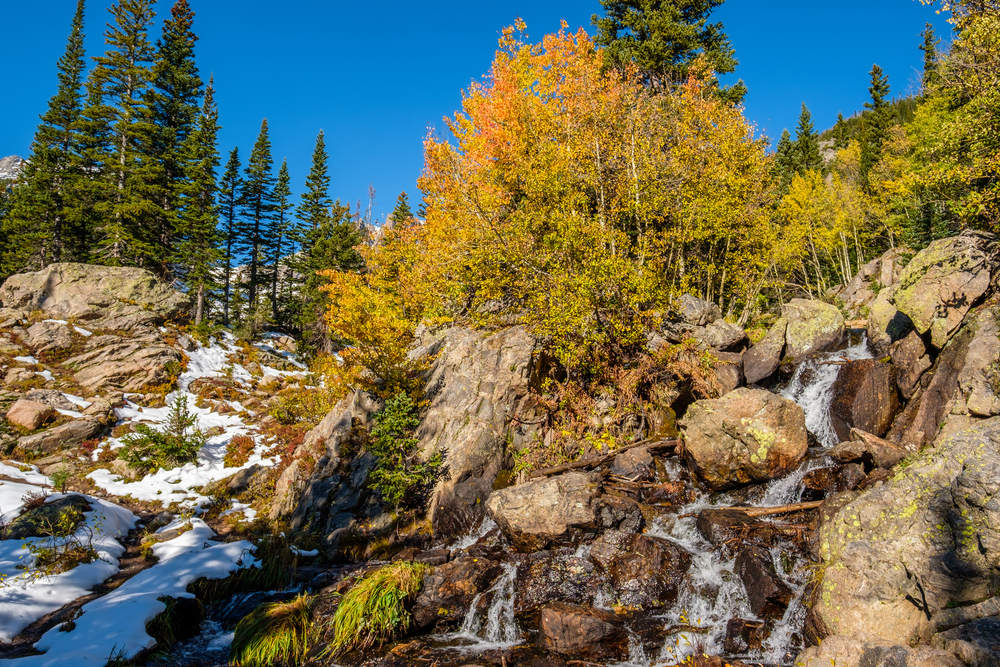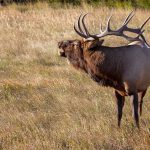The Rocky Mountain National Park (RMNP) is a holiday destination that many people aim to visit, from families looking for a fun outdoor getaway in the summer holidays to diehard adventurers who just haven’t made it there yet!
With so many different things to do, trying to plan your camping or hiking trip to the Rockies can feel overwhelming.
How many days will you need to visit the Rocky Mountain National Park and sample its delights effectively? Where should you go while you’re there? Are there interesting places to go nearby? What are the facilities like?
We’ll answer all these questions and more!
While many people might not realize it, planning how long you’ll be in the Rocky Mountain National Park is important both to ensure a positive experience and to make sure you stay safe should something go awry.
In this article, we will cover all the questions mentioned above, as well as:
- A brief description of the RMNP and its attractions
- Factors you should consider on your visit around time, locations, and more
- FAQs around what you need to plan for in your time at the park.
Let’s get into it!
Overview of Rocky Mountain National Park
What makes the Rockies just so special? From its geography to environment, this national park has plenty to offer!

Location and Geography
Located in Colorado just off Route 34 and spanning an impressive 415 miles, the Rocky Mountain National Park provides a large space for you to explore on any camping trip.
While it might not rate among the largest national parks by size, it’s certainly one of the most breathtaking!
As the name suggests, the park contains several mountains that tower above the landscape. With peaks over 13,000 feet (or approximately 4000 meters), the skyline certainly leaves nothing wanting.
The park also offers a variety of non-mountainous scenery, including a variety of rivers and alpine lakes that punctuate the landscape.
It borders both Grand Lake and Lake Granby – both of which you might catch a glimpse of if you are up one of the taller peaks and looking the right way.
Natural Environment
The Rocky Mountain National Park hosts a variety of wildlife, from plants to marine animals to terrestrial creatures and birds.
Plants
Among a variety of different plants, there are two of particular interest due to their localization to the RMNP and their precarious conservation statuses.
The RMNP plays host to the Colorado Butterfly Plant and the Ute Ladies’-Tresses, both of which are classified as endangered by the US Fish and Wildlife Service.
Other plants that feature prominently in the park include a large variety of trees, from conifers like the Ponderosa Pine and Subalpine Fir to the Rocky Mountain Maple and the fruit-bearing Kinnikinnick, as well as mosses, algae, and some invasive exotic plants such as Canada Thistle.
Threatened Animals
The park also plays host to a variety of threatened animal species.
These include the Canada lynx, greenback cutthroat trout, Mexican spotted owl, and North American wolverine, neatly comprising animals across the three environments of water, land, and sky.
The RMNP is one of the few sites across the US that has a stable population of Canada lynx — making this a large draw for wildlife enthusiasts — and is similarly one of very few US habitats for the North American wolverine.
While the Mexican spotted owl is slightly more common, the greenback cutthroat trout only inhabits the state of Colorado — making the Rockies a perfect place to catch a glimpse of this very rare animal.
Factors to Consider When Deciding How Many Days to Stay
With so many things to do and sights to explore, figuring out exactly how long to stay in RMNP can be an overwhelming task. However, here are a few important factors that might just help sway your decision!
Travel time
One of the most important factors to consider is how long it will take you to travel to and from the national park.
If it will take you several hours or days to get there, you’ll want to make sure you have enough time at the park to make your trip worthwhile!
On top of this, you’ll need to consider when you need to leave in order to return home or make it to your next destination. This is another factor that travel time will impact heavily.
Number and type of activities
If you want to get lots done and experience the national park to its maximum potential, you’ll need to allocate more time than if you’re going to do one or two very specific activities.
For example, if you want to experience all the genres of environment that the RMNP offers (rivers, lakes, mountains, plains, and plateaus), you’ll need to allocate a long time to explore the park.
If you want to go on particular trails or hikes, you may need to allocate multiple days for these – especially if you choose longer trips. And if you want to go on guided tours, you’ll need to factor in the length of these trips as well!
This is arguably the most important factor in determining how long you should allocate for your trip to the RMNP.
After all, if you do not have enough time for all the activities you want to do, you’ll be dissatisfied! On the other hand, the overallocation of time will leave you bored and stagnant.
Hiking trails
If you’re planning on enjoying the variety of hiking trails in the RMNP, you’ll need to consider how long it will take you to complete these.
It’s worth remembering that your walking speed on these trails will likely be different from walking in an urban or flatter environment.
Before you set out, it’s a good idea to check what others have said about the trails you’re planning to hike.
Try and get some opinions from people who have very similar fitness and/or experience levels to you so that you can ensure that you have an accurate estimation of the difficulty and time required.
If you can’t find anyone who matches you well, find people on either side of your fitness and experience level and average out their estimates!
This way, you’ll have a good idea of how long it will take you specifically to complete the trail, rather than operating off a generic estimate for the average hiker. Always add a bit of extra time to prepare for unforeseen complications or difficulties on the walk.
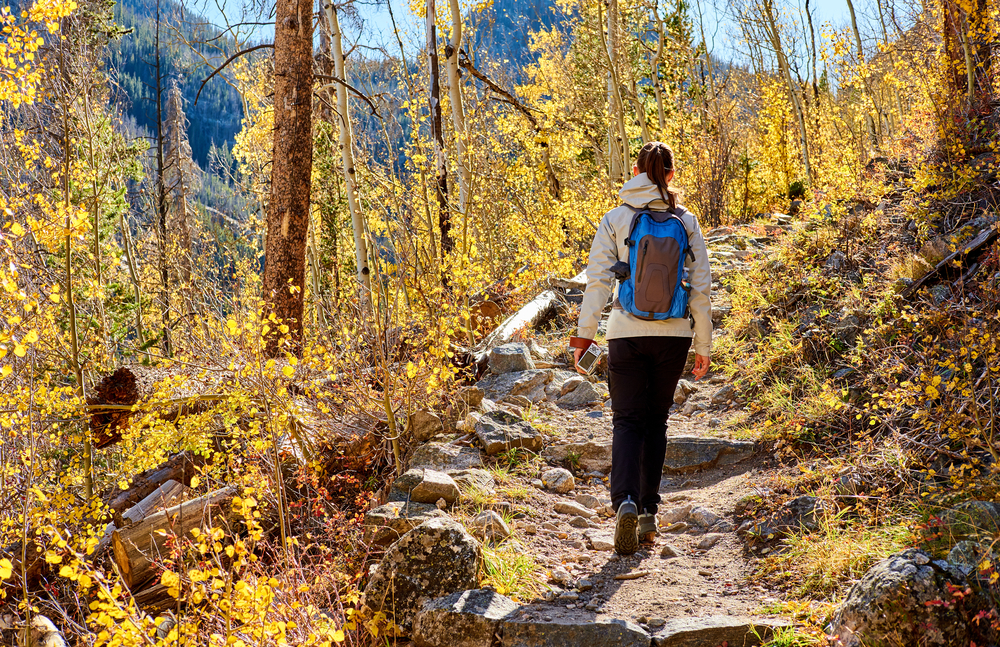
Altitude acclimatization
The higher you get, the thinner the air becomes – and the more difficult it is to draw sufficient oxygen into your lungs.
While the elevations of the RMNP that most visitors will be sticking to (that is, those without prior mountaineering experience) are not severe enough to cause severe breathing problems, the decreased oxygen content may still contribute to altitude sickness.
The best way to avoid issues from altitude is to ensure that you take your time and do not ascend too quickly!
Allowing some time to acclimatize and taking your time means that your body can get used to the decreased oxygen content in the air. As a result, you will be able to continue functioning regularly at the higher altitude.
If you go up the mountain too fast and develop altitude sickness, you’ll have to go back down to a lower elevation anyway – wasting more time and increasing the stress of the experience in the process.
Weather conditions
Checking the weather is incredibly important in terms of keeping safe in the outdoors as snow, rain, wind, and abnormal heat are all dangerous when you are away from the amenities of modern society.
If you’re going to the mountains in a season that is known for flooding, snowfall, or other adverse weather conditions, you’ll want to give yourself some time on either side of your planned activities to ensure you can get in and out of the park.
Weather conditions can also slow your travel in general. Driving through heavy rain or snow is more difficult and typically slower than driving the same route on a bright, clear day. Hiking in these conditions is even more difficult!
Photography opportunities
You’ll definitely want some souvenirs from your trip, and one of the most stunning from any national park are the photos!
With this in mind, it’s a good idea to allocate more time than you need for each activity to account for photo stops (or even just for enjoying the view).
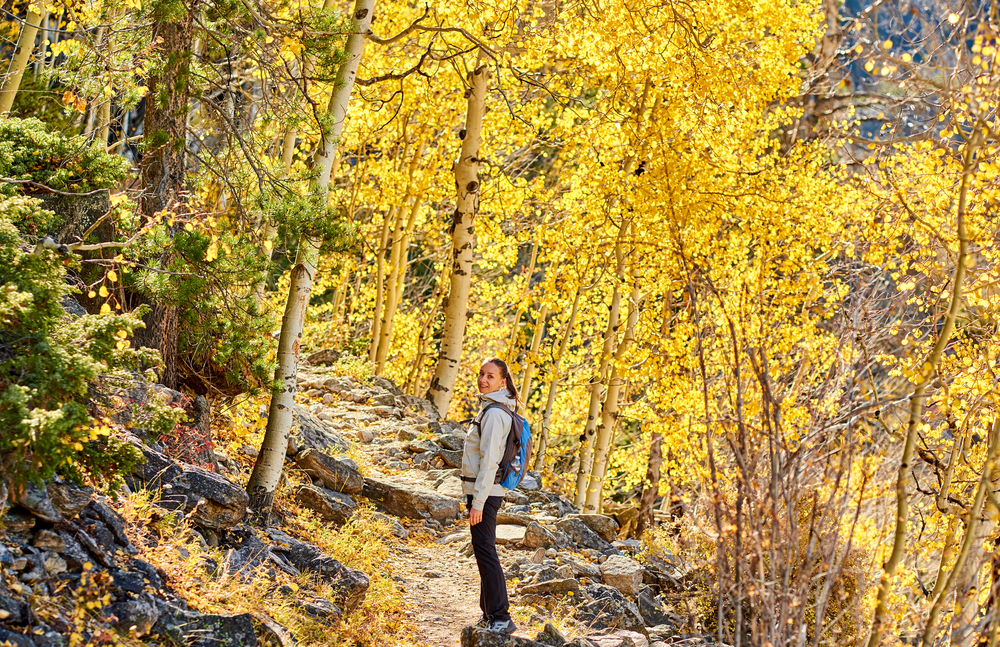
Camping plans
If you’re planning to camp properly in the RMNP, you’ll need to ensure that you have budgeted time for pitching your tent, cooking meals, packing down at the end of your stay, and generally relaxing at your campsite and enjoying the experience.
Setting up and taking down camp always takes longer than you expect, even for experienced campers. So, make sure not to lowball the amount of time you’ll need for this!
Visitor center visits
If you want to swing by a visitor center, you’ll need to make sure that your travel plans align with the center’s opening hours.
Most visitor centers are open 9-5 in Summer and early Fall but tend to have reduced hours in late spring. Additionally, they tend to be completely closed from mid-fall to late spring.
Wildlife observation
If you want to experience the myriad of interesting and rare wildlife that inhabits the RMNP, you’ll want to allocate more time than normal to ensure you have the best possible chance of seeing the animals and plants you want to see.
This is particularly true of those who want to take pictures of the wildlife, as photographing animals is notoriously time-consuming!
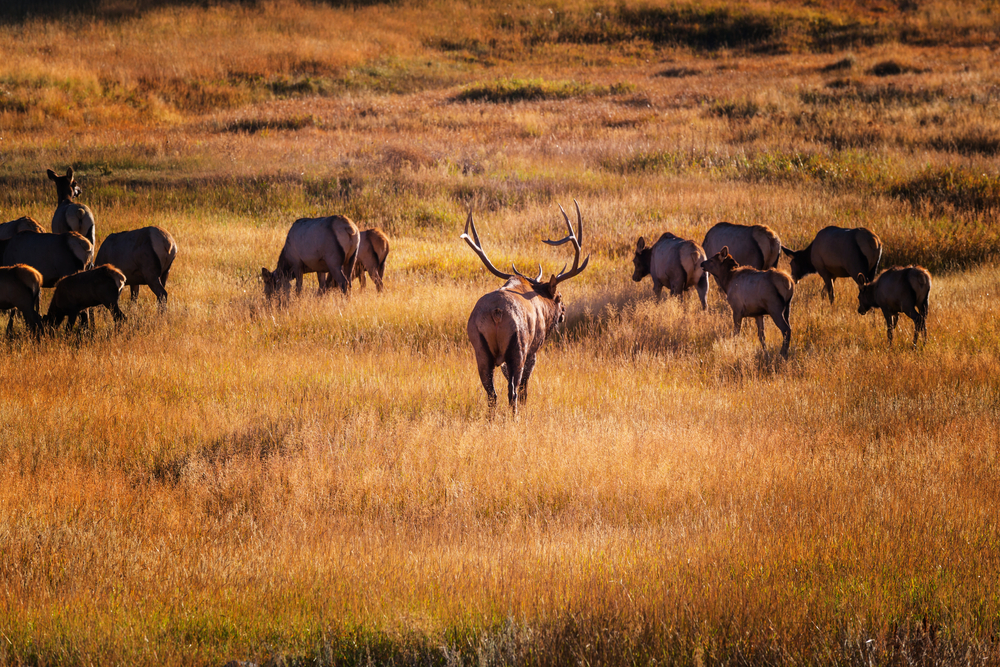
Exploration of scenic drives
Old Fall River Road and Trail Ridge Road are both excellent scenic drive experiences – perfect for those who don’t want to spend too much time walking around the park or who might not have the required fitness level to do so comfortably.
Making sure you allocate enough time for these is key. While the roads are 11 and 48 miles long respectively, it’s worth allocating more time than you’d expect for these.
Trail Ridge Road looks to have an estimated time of around two hours one way due to traffic and wildlife congestion, while Old Fall River Road will take closer to one hour to reach the summit.
Park events and programs
If you’re planning to enjoy a one-off or regular park event or program, you’ll want to account for the time it will take you to complete this activity (as well as to get yourself ready for it and rest afterward!).
You’ll also need to think about how these activities fit into your stay as a whole. If a park event begins at a certain time or on a certain day, it might mean you have to wait longer to do other things in the park or that you need to begin your activities in the park earlier.
How Many Days Do You Need For Rocky Mountain National Park?
The full answer is that it depends. However, for most people, two to three days should be sufficient to enjoy the activities they want to take part in.
If you just want to pay a flying visit to the park and enjoy a select two or three attractions, even just one day might be enough!
In general, you should consider all the factors we’ve listed above and work out how long it will take you to do everything you want to. Then, factor in the time it will take you to prepare, rest, get into the park, and get out.
This will allow you to tailor the time you’re spending in the park to ensure that you are able to do everything you want to!
Itineraries for Rocky Mountain National Park
Raring to go to the Rockies, but not really sure what to do just yet? Check out these sample itineraries to help you plan your stay!
While it’s fine to follow these plans to a T, you can also mix and match some of them for an experience that’s uniquely yours.
1-Day Itinerary for Rocky Mountain National Park
If you only have a day, exploring the Rockies should be your priority.
Morning
Beginning your first day in the Rockies, you should enter the park early, starting at the Beaver Meadows Visitor Center located west of Estes Park on U.S. Highway 36 for orientation.
After orientation, we recommend exploring the Bear Lake Road corridor which offers incredible scenic views over the lake towards Hallett Peak and the Continental Divide.
Bear Lake is surrounded by ponderosa pine and provides a variety of great hiking trails for all ages and views of spectacular wildlife.
Afternoon
Spending your morning at Bear Lake hiking and swimming might make you hungry, so stopping for lunch at one of the designated spots in the park is essential to regain some energy!
After lunch, go on another hike on the Alberta Falls Trail near Bear Lake – a 1.7-mile round trip that’s perfect for all ages. The elevation gain throughout the trail is only 200 feet and begins at the Glacier Gorge Trailhead in the Rockies.
When you reach the waterfall, you’ll get a fantastic view of water rushing over granite rocks and falling 30 feet to the river below.
Logistics
Since this is only a day trip through the park, you won’t need to find any camping facilities.
If you still want to stay in the area, consider staying in famous Estes Park which features excellent accommodations and restaurants. The town is known as the headquarters for the Rockies and a perfect base camp for adventures into the park.
2-Day Itinerary for Rocky Mountain National Park
Those who can spare two days get to do a lot more sightseeing, hiking, and other activities!
Day 1: Morning
Begin your morning at the Beaver Meadows Visitor Center before driving along Trail Ridge Road through the National Park. The road spans the national park from east to west, linking Estes Park and Grand Lake.
The road winds past breathtaking 12,000-foot peaks and offers some of the best views over the Rockies.
While on this drive, take advantage of pulling through Many Parks Curve and Forest Canyon Overlook turnouts and admire the sweeping views.
The Alpine Visitor Center is the halfway mark on the drive and the perfect place to stop for a hot beverage while taking in the scenery.
Day 1: Afternoon
In the afternoon, stop for lunch at one of the breathtaking viewpoints in the park. After lunch, head down to Bear Lake and enjoy a 1.7-mile hike. Swim, boat, fish, and stroll along the shores if you’re visiting in the summer months.
For early evening camping, it’s recommended to camp at The Glacier Basin Campground – conveniently located in one of the most popular areas of the Rockies.
This campground is found off the main road close to the Bear Lake Trailhead and Sprague Lake, making it an ideal spot if you want to be close to the central Rocky Mountain spots.
The campground has 150 sites and can accommodate RVs and trailers for $30 per night. This spot is only open during the summer and is incredibly competitive, so you’ll need to reserve a spot!
Day 2: Morning
On your second day, get up early and drive to the Old Fall River Road – a 9.4-mile gravel one-way road along Mount Chapin’s south face. This breathtaking drive will take you past Chasm Falls and Fall River Pass.
The road was the first auto route through the Rocky Mountains and opened in 1920, and it’s a much more authentic motor nature trail than Trail Ridge Road.
The drive is only available in the summer, but it provides the most breathtaking scenery and is well worth the trip.
Day 2: Afternoon
After the drive, take the 9.4-mile return hike along Chasm Lake. This hike offers the most spectacular views below Longs Peak, the highest peak in the Rockies.
This trail begins at Longs Peak Trailhead, with an altitude of 9,400 feet, and climbs steadily through forests and alpine tundra.
This trail can be grueling, and you should be careful of the extreme heat of the summer and any excess snow that can occur in spring and autumn.
Exercise caution when crossing! Beware of altitude sickness that affects many visitors annually, and moody mountain weather that can change quickly.
After the trail, head to Estes Park for a well-deserved dinner at either Bird & Jim or Seasoned American Bistro before returning to The Glacier Basin campground for a good night’s rest.
3-Day Itinerary for Rocky Mountain National Park
Three days hit that sweet spot for giving you pretty much the best that the Rockies can offer.
Day 1: Morning
Begin your morning at the Beaver Meadows Visitor Center for orientation from a knowledgeable park ranger before embarking on your activities for the day.
After orientation, drive along the Trail mentioned above, Ridge Road, making sure you stop at Many Parks Curve and Forest Canyon Overlook turnouts to admire the breathtaking views and snap some fantastic pictures.
After the drive, head towards Bear Lake to the Glacier Gorge Trailhead and hike the 1.6-mile Alberta Falls. This trail is extremely popular, so using the free shuttle to reach the trailhead during peak season is recommended.
The trail crosses Chaos Creek and heads towards the waterfall with routes through pine forest and aspen groves, making it beautiful in the winter.
The 30-foot waterfall down to Glacier Greek is regarded as the best in the National Park and also offers hikers the perfect spot to enjoy lunch.
Day 1: Afternoon
After stopping for lunch and soaking in more beautiful views, head over to Bierstadt Lake – a popular 2.4-mile trail that steadily climbs 600 feet along several switchbacks before reaching the Bierstadt Moraine.
The lake is covered by a thick pine forest and sedges that make it an incredibly tranquil experience. During this hike, you will get beautiful views of the surrounding Rocky Mountains.
For camping, head over to the Moraine Park Campground, the largest campground in the central Rockies that offers a beautiful view over the mountain.
The grounds have 244 individual campsites and RV access, priced at $30 per night in the summer and $20 in the winter. The park is open all year round, but reservations are required in the popular months.
Day 2: Morning
To begin your morning, drive to Alluvial Fan, an exquisite cascade of water flowing through a boulder field off the road to Endovalley.
The Alluvial Fan Trail was designed to be fully accessible and offer hikers of all levels an enjoyable experience while providing breathtaking views of the Mummy Range, Horseshoe Falls, and Endovalley.
After that, explore the Tundra Communities Trail, which is a 1.1-mile round trip and has a staggering elevation of 12,110 feet. Although this trail is short, the altitude is exceptionally high – making it difficult even for experienced hikers.
Even if you’re already acclimated to the elevation, you’ll likely feel the effects of the altitude during this trail.
Luckily, there are interpretive signs along the route that will allow you to catch your breath throughout the hike!
The trail travels through an open tundra where trees aren’t able to survive due to the extreme conditions – offering hikers a look into the alpine ecosystem present at higher altitudes.
Day 2: Afternoon
After eating a packed lunch in the park, taking in the views, and regaining your energy, continue exploring the park’s natural beauty and wonders!
On the way back from the park to your campground, stop by the Alpine Visitor Center for a hot/cold drink (depending on the season you’re visiting and take in the stunning views before bed.
Day 3: Morning
On your third day, take the opportunity to discover other places you may want to explore within the national park.
There are so many different and exciting trails and activities that you can do within the national park! Alternatively, sit back, relax, and take in the stunning landscapes and wildlife that the Rockies offer.
Day 3: Afternoon
Enjoy the time you have left in the Rockies and soak in the environment, or if you still have some adventuring energy left, swim at one of the iconic lakes or take one of the short trails in nature before checking out of the campground.
4-Day Itinerary for Rocky Mountain National Park
Aside from access to the popular spots, spending four days in the national park will also acquaint you with all of the lesser-known places that are worth a visit!
Day 1 & 2
Follow the schedules for the 2-day itinerary to fill your first two days of the Rocky Mountain National Park experience!
Day 3: Morning
On day three, you can begin exploring different trails, such as Club Lake, a beautiful lake filled with lily pads.
The track for Club Lake is a 4.6-mile round trip and takes you through wildflowers, wetlands, and glacial formations before arriving at the lake.
The trail will take around 3 hours and will bring you through pristine wilderness towards the beautiful lake surrounded by thick pine forest.
Unfortunately, the terrain you’re taking in was devastated by the Fern Lake Fire 2012, which burned 3,500 acres in Club Lake.
However, for roughly seven-tenths of the hike, you won’t be able to see any fire devastation. When you reach 2.3 miles, you’ll start to notice more of the destruction the fire caused.
Regardless, the trail is still a great addition to your time in the Rockies and offers dramatic scenes of lake shorelines against the backdrop of the mountains.
Day 3: Afternoon
If you’re looking for more activities, take a ranger-led program at any of the visitor centers around the park or join a park event during the summer months.
After this, enjoy lunch in the park at one of the many scenic spots available while continuing to explore and relax in the natural beauty of the Rockies.
Day 4: Morning
For your fourth day, start venturing off to the less crowded areas of the park such as Longs Peak Campground – a perfect spot for a quieter experience.
The campground is close to Chasm Lake and offers beautiful views of Estes Cone, the ideal location to explore and relax before heading off.
Day 4: Afternoon
To end your time in the Rockies, finding a beautiful picnic spot within the park to relax before departing could be just the ticket! Many beautiful sites are close to the campground or only a drive away.
Logistics
If you’re looking to camp, it’s recommended that you book Moraine Grounds well in advance.
Alternatively, if you’re looking for a more backcountry remote camping experience, you’ll need to acquire permits and plan your travels well ahead.
5-Day Itinerary for Rocky Mountain National Park
Following and adjusting the guides above will be the best way to structure your time in the Rockies.
You’ll have the freedom to customize your itinerary based on what you want to get out of your time there! As a plus, you can tailor your experiences to your interests and take on more intensive hiking and exploration.
Backcountry camping in remote areas is also more feasible if you spend a longer amount of time here, especially if you want to take on more hiking,
However, it’s important to remember the permits and planning required for backcountry hiking.
Additional Tips for Maximizing Your Experience
Visiting Rocky Mountain National Park is quite the adventure, and there are many ways to enhance the experience even more. Make the most of your trip with these tips:
Check the weather forecast before heading out
The only thing worse than finding out you can’t get into the park due to bad weather is being trapped at your campsite – or worse, on a trail – when the weather turns bad!
Like any outdoor activity, being prepared is the name of the game – so make sure to check both the typical weather forecast, snow depth forecast, and the current wildfire outlook!
Remember that weather will likely differ between locations in the national park due to its very large area, so ensure that you are checking the weather for the area you are planning to be in.
Start hikes early to avoid crowds
The RMNP is a very popular area and is well-frequented by both domestic and international tourists alike.
While seeing lots of people in the park is a great sign that the unique environment is being properly appreciated, it also means that wildlife is more wary of the trails and that you’ll find it harder to make progress when traveling in the park due to congestion.
As a result, starting hikes early is your best bet! Many people will not yet be awake and ready to go, so you’ll get a lead on the crowds – allowing you to enjoy the park to its fullest extent
Bring layers for changing weather
Even if the weather forecast says things should be clear, weather can change in the snap of your fingers – especially in an alpine environment.
Making sure that you bring proper clothing for the changing weather (i.e. extra jackets if it gets cold or wet, and the ability to remove clothes if it suddenly gets hot and sunny) is a the key step to ensuring your experience goes as well as possible.
Stay on marked trails
While it can be tempting to wander off into the parts of the park that are not frequented by your fellow tourists, this is generally a very bad idea.
The marked trails are marked for a reason: other areas may be protected by wildlife mandates, contain difficult (or even dangerous-to-traverse) terrain, and in general, are not places you want to be!
Additionally, while going off-track may raise your odds of seeing some wildlife (something that draws many people this way in the first place), that also means a higher chance of them seeing you.
And while many of the kinds of wildlife that inhabit the park are docile, coming across one by surprise can easily startle it and lead to you being injured or killed.
Perhaps most importantly, heading off the trail means that you are highly likely to get lost – with the result being that nobody will know where you are!
Pack sufficient water and snacks
Running out of food and water is a danger in any outdoor situation, and this is true in the RMNP too.
Of course, running out at a campsite may just be a matter of leaving early – but nobody wants to do this! Running out on a trail can be extremely dangerous; both of these events are best avoided.
Respect wildlife; maintain distance
If you don’t bother them, they won’t bother you. This statement holds for most of the wildlife in the RMNP.
Keeping your distance ensures that you minimize the chance of having a negative interaction with a wild animal.
Capture photos during golden hours
Golden hours are periods of the day that allow the best natural lighting for your photos.
They come with a characteristic soft, golden light that can accentuate particular aspects of a photo and give it a higher aesthetic appeal.
Carry a detailed park map
Step one to not getting lost is to carry a proper park map!
You can find park maps for campgrounds and trails here, meaning that you’ll ensure that you are able to easily find your way should you get turned around.
Book campsites well in advance
The RMNP is a popular destination, and many people want to camp there.
You’ll want to make sure that your campsite bookings are in place before you begin your travel. In fact, they should probably be one of the first things that you book!
You can book up to six months in advance, so take advantage of that time to ensure you have the places you want.
Drive cautiously on park roads
Park roads aren’t the same as highways; they can involve unsealed terrain, tricky corners and climbs, and generally might not be classed as easy driving. Ensure that you are driving a vehicle suited to the terrain and take your time to avoid incidents.
Research elevation effects
Understanding what different elevations do to the body is important on any trip to an alpine environment.
While we’ve given a brief discussion on altitude illness and acclimatization earlier in this article, you should do your own research to get a fuller idea of what different elevations will do to your body and how you can prepare for and combat this.
Try diverse trails for variety
While it’s tempting to stick to trails you know are good experiences – maybe you have been recommended by family, friends, or other online sources – the path less traveled is often worth the walk!
Trying out some all-time favorites as well as some less-trod paths is a great way to ensure that you get the full RMNP experience.
Visit less popular viewpoints
Similarly, find some lesser-known spots to enjoy the scenery.
Popular viewpoints will be crowded with people taking photos and enjoying the view, and you’ll likely have to wait a long time to get your turn.
Less popular viewpoints are much more likely to yield a peaceful experience.
Attend ranger-led programs
Park rangers are intimately familiar with their regions and specialties in the park, and you’ll learn a lot from them about the park if you attend one of the programs they lead.
Seeing as they know the tricks, you might also come across some wildlife or areas that you would otherwise not have seen.
Be prepared for high altitude
Aside from researching the effects of altitude, be prepared for the new environment by remembering that it will likely be colder and windier, as well as making sure that you are comfortable with being high up.
Leave no trace of your visit
“Take only pictures, leave only footprints”. That’s how the famous saying goes, and it remains true for the RMNP as it does for every outdoor experience!
Making sure you do not damage the park by taking plants or leaving rubbish is the best way to ensure that it continues to provide enjoyment for both you and others in the years to come.
Check for trail closures
Before you leave, check the latest information about trail closures to see if you need to adjust your planned routes.
Trails can close at short notice, particularly in snow or wildfire seasons, so keep up to date whenever you can along your way to make sure you have the most up-to-date information possible.
Plan for limited cell reception
The national park has limited cell reception, partly due to the severe changes in elevation.
None of the campsites have cellphone reception or an internet connection, so you will be completely cut off if you are staying here for several days.
As a result, make sure that you have everything you need either in hard copy or downloaded to an electronic device (and if the latter, bring a portable battery pack!)
Purchase an annual park pass if needed
If you’re visiting more than once in a year, it’s probably worth purchasing an annual park pass.
While you’ll likely also need a timed entry pass to access the park, this will save you money on the general entry pass requirement if you visit more than twice in a year.
Enjoy stargazing opportunities
The park experience doesn’t stop at night; enjoy the opportunity to have a night sky view free of light pollution from streetlights, buildings, and traffic.
You’ll be able to see many more stars than you would in a typical urban environment!
Follow park regulations strictly
Park regulations exist for good reason – they preserve the health of the environment and your safety.
Following them means that you’ll know you are visiting the park sustainably, and that you won’t be asked to leave the park by a ranger or other official.
FAQs
How many days is Rocky Mountain National Park open?
Rocky Mountain National Park is open all day, every day of the year. However, you may need to watch out for opening times on visitor centers, or requirements for park entry times.
What are the best months to visit Rocky Mountain National Park?
Visiting in the summer will ensure that all the hiking trails are accessible and that you are able to navigate the park easily, as well as experience better weather conditions. Visiting between June and October will also ensure that all the visitor centers have unrestricted opening hours.
Can I see Rocky Mountain National Park in a day?
No. You can certainly see part of the Rocky Mountain National Park in a day, and even complete one of the longer scenic drives. However, you will need more time to appreciate the park in full.
Is 2 days enough in Rocky Mountain National Park?
It depends on what you want to do! Two days is sufficient to enjoy a few activities in the park, but if you’re looking to do a variety of long-distance hikes or drives you may need to allocate more time.
What is the best way to tour the Rocky Mountain National Park?
Due to the lack of public transport, renting a car is probably best as it will allow you proper access to the whole park. Otherwise, joining ranger-guided tours and activities will allow you to experience the park to the fullest – especially if you have little experience in the outdoors.
Can you go to Rocky Mountain National Park without a car?
It is difficult to access Rocky Mountain National Park without a vehicle. However, there are a variety of commercial ventures that you can use! Alternatively, you could use public transport to get from Denver to the terminus of the shuttle bus that operates in the park from May to October.

